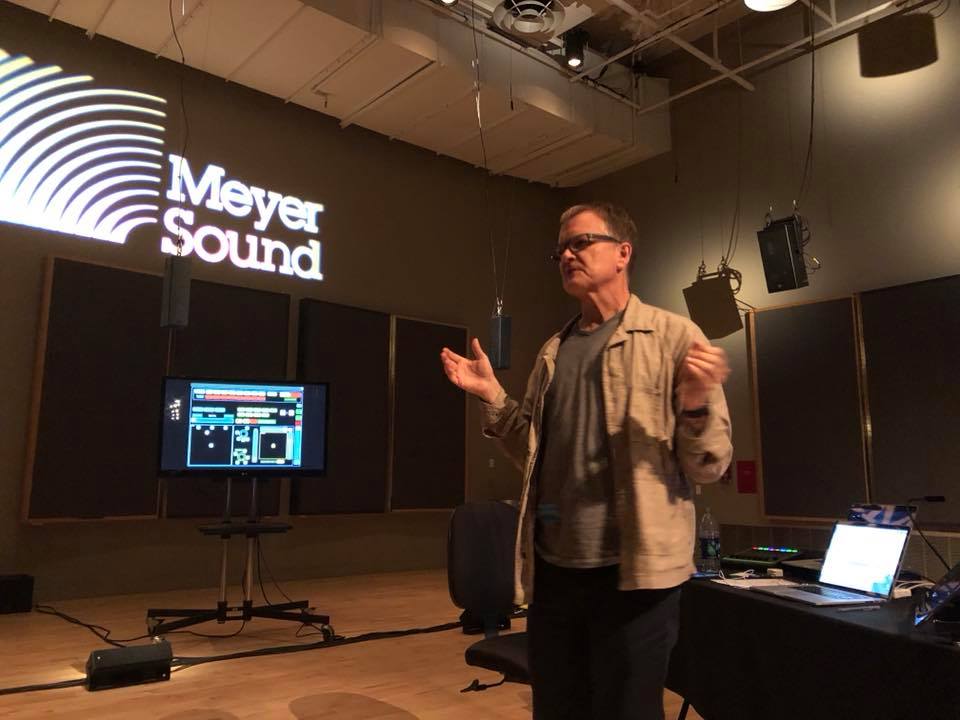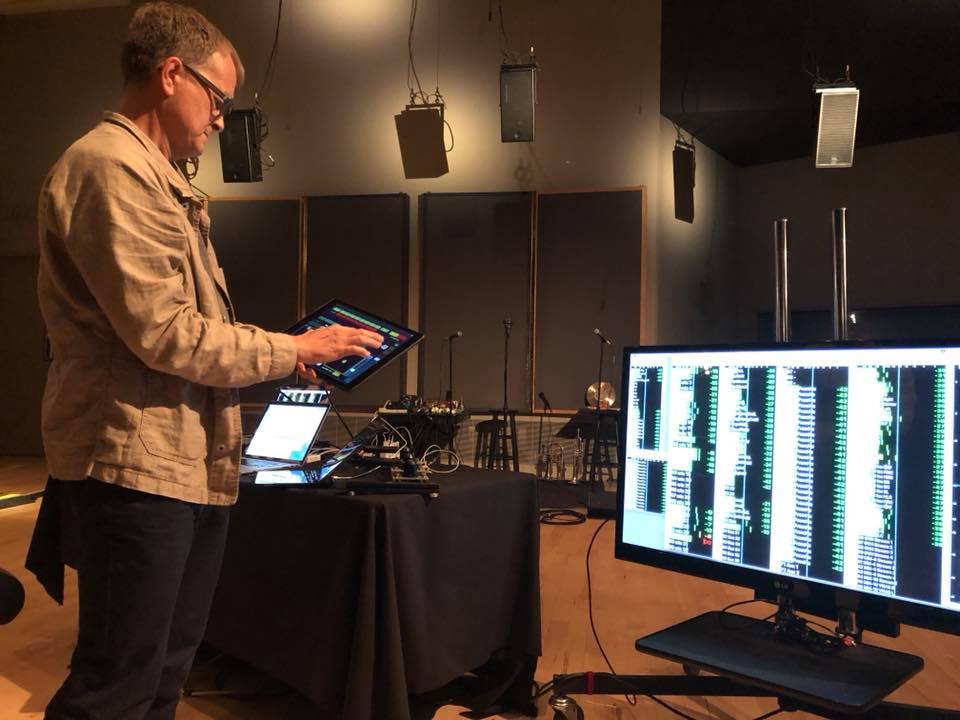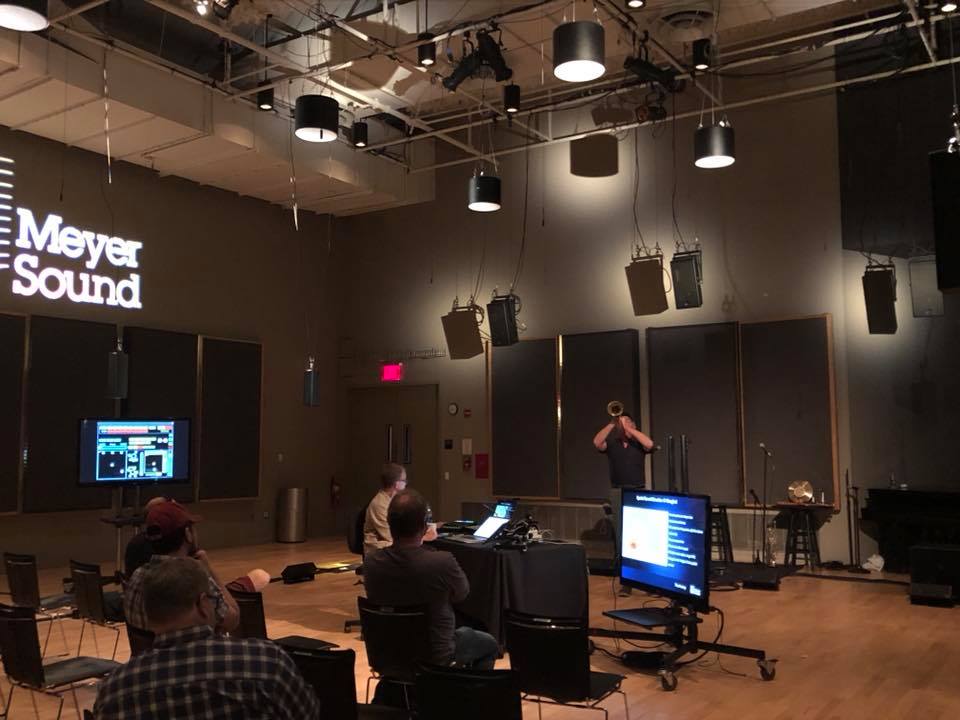Adding a New Dimension to Live Performance

A dozen or so fortunate journalists, customers, and collaborators were privy to a captivating demonstration of Meyer Sound’s Spatial Sound at the Agnes Varis & Karl Leichtman Studio, part of Jazz at Lincoln Center in New York City.
The demo was led by Steve Ellison, Meyer Sound’s director, spatial sound, who showed how the company’s SpaceMap algorithm can manipulate live sound on the fly—creating a unique soundscape that can manipulated a number of ways.
The studio had many of Meyer’s recently introduced UP-4slim UltraCompact installation loudspeakers hung around the room, forming an oval around the attendees, and eight Ashby-8C installation loudspeakers overhead. There were also floor-mounted lower lateral UP4s placed around the room in a rectangle, and microphones hanging at various points for the Constellation system.

Using a touchpad with an easy-to-follow GUI for control, Ellison started the demo by playing a track of rhythmic clapping—two people clapping in unison, one on each track. By moving his finger across the touchpad, he could perform three-dimensional panning of the tracks—placing the sounds anywhere he wanted, moving them along the speakers as they traveled. More than left-right, the sounds went forward and backward, fading the clapping on one side, while amplifying the other. Effortlessly, he moved them all around the space.
That was impressive, but he took things to a whole other level when he brought in musician Eric Dahlman—a friend of his he has known “since he was zero” (their parents were friends before Ellison was born). Dahlman started blowing air through his trumpet into a microphone, and used pedals for delay and looping. From there it was fed into Meyer’s SpaceMap-enabled D-Mitri audio platform, which gave Ellison the ability to begin moving the sound around the room—forward and back, side to side, back to side. Dahlman continued adding sounds—bells, trumpet—that Ellison would place in the room and move it at odds with the breathing sound.
The result was a unique immersive experience that put the mixer in as much a creative position as the performer, or, as Ellison put it, “creating an instrument with a room.”

SpaceMap is not new—Ellison mentioned that it dates back to 1993 — and it has been used in many theaters and sound spaces; notably the deeply immersive Broadway production of Natasha, Pierre & the Great Comet of 1812. But the reason for yesterday’s demo was to illustrate Meyer’s intention about expanding SpaceMap back to where it was originally conceived—live music performance.
A daily selection of the top stories for AV integrators, resellers and consultants. Sign up below.
The recent Moogfest showed some of SpaceMap’s potential with the creation of a unique soundscape at the new A3, an advanced spatial sound environment inside the Durham Armory created as a collaborative effort by Moogfest, Meyer Sound, and Virginia Tech’s Institute for Creativity, Arts and Technology (ICAT). Aprovided a large-scale, multi-dimensional spatial sound environment for performances by Shabazz Palaces, Suzanne Ciani, Mouse on Mars, and Waajeed, among others.
The A3 system comprised a total of 51 Meyer Sound loudspeakers, with the main LEOPARD line arrays augmented by 22 surround and overhead speakers for total audience immersion. As in the NYC demo, a D-Mitri handled the SpaceMap chores.
The demo definitely left the attendees wanting to hear more. It will be interesting to report on how the creative audio community incorporates Spatial Sound into their live shows.
